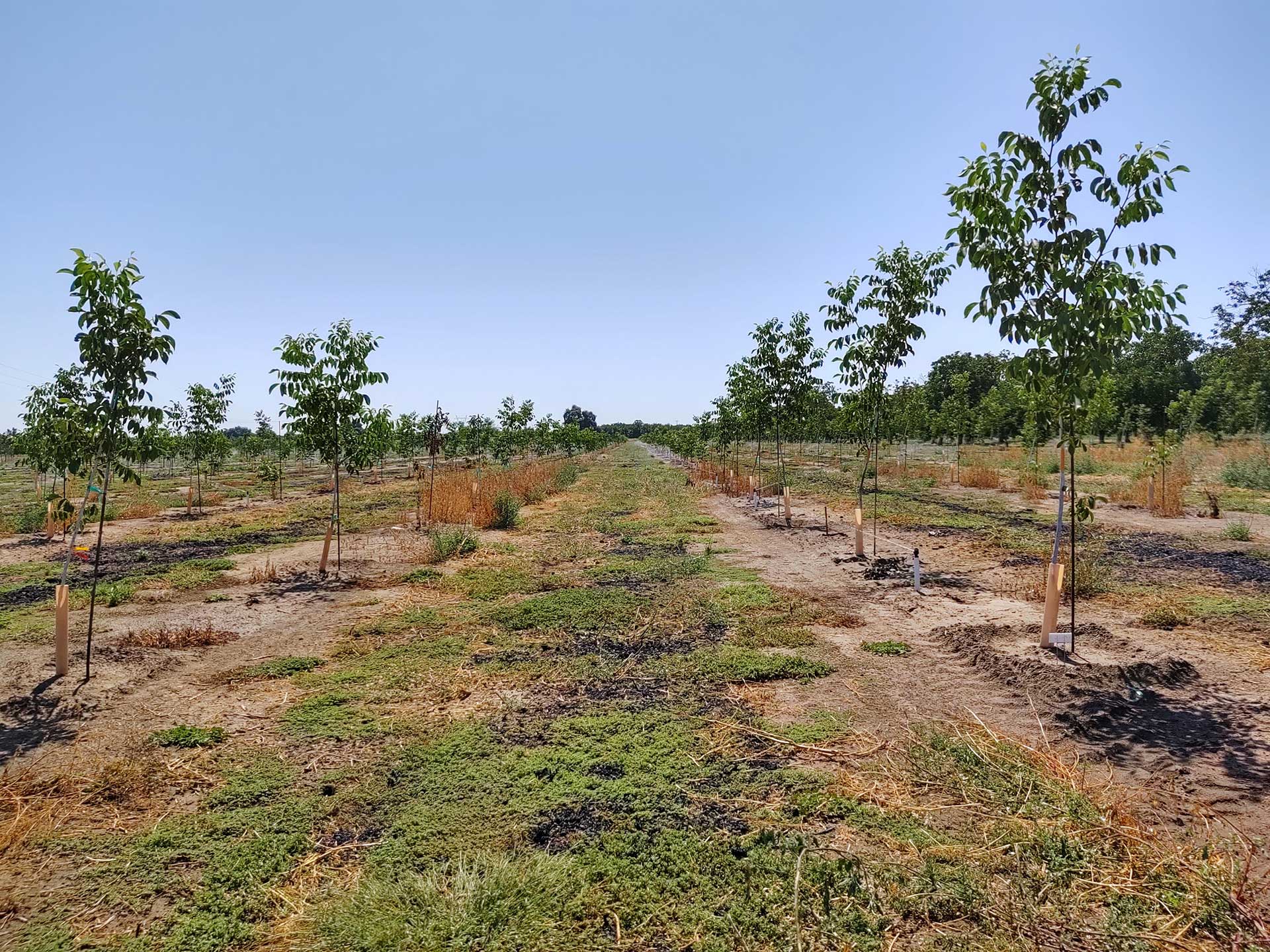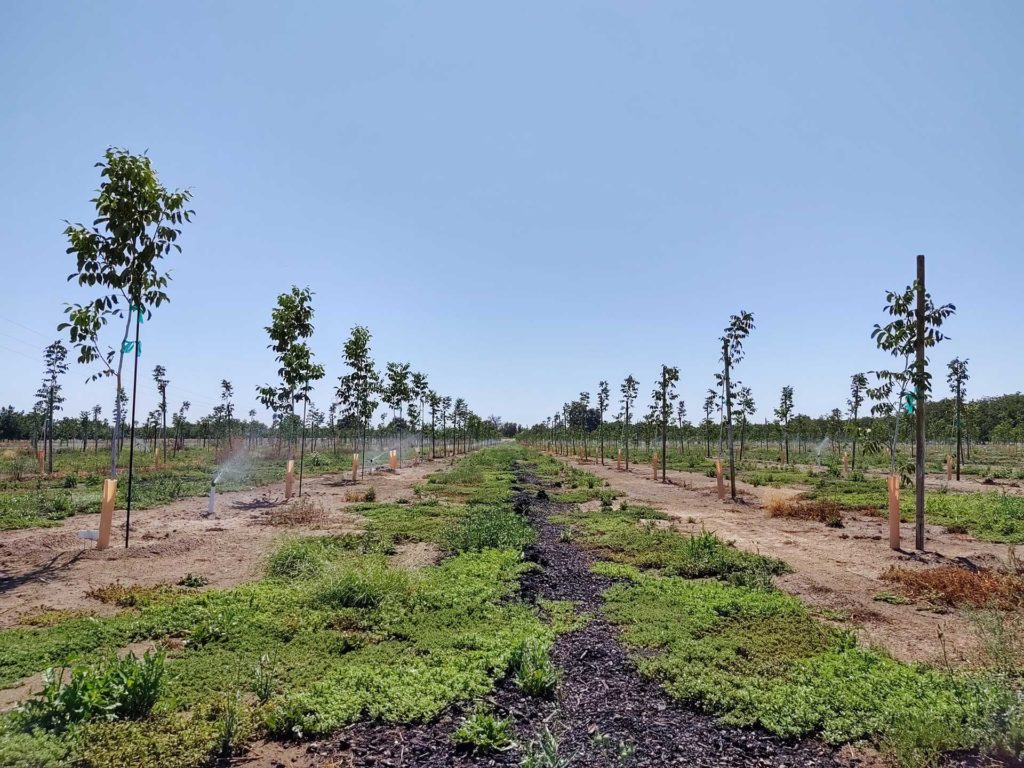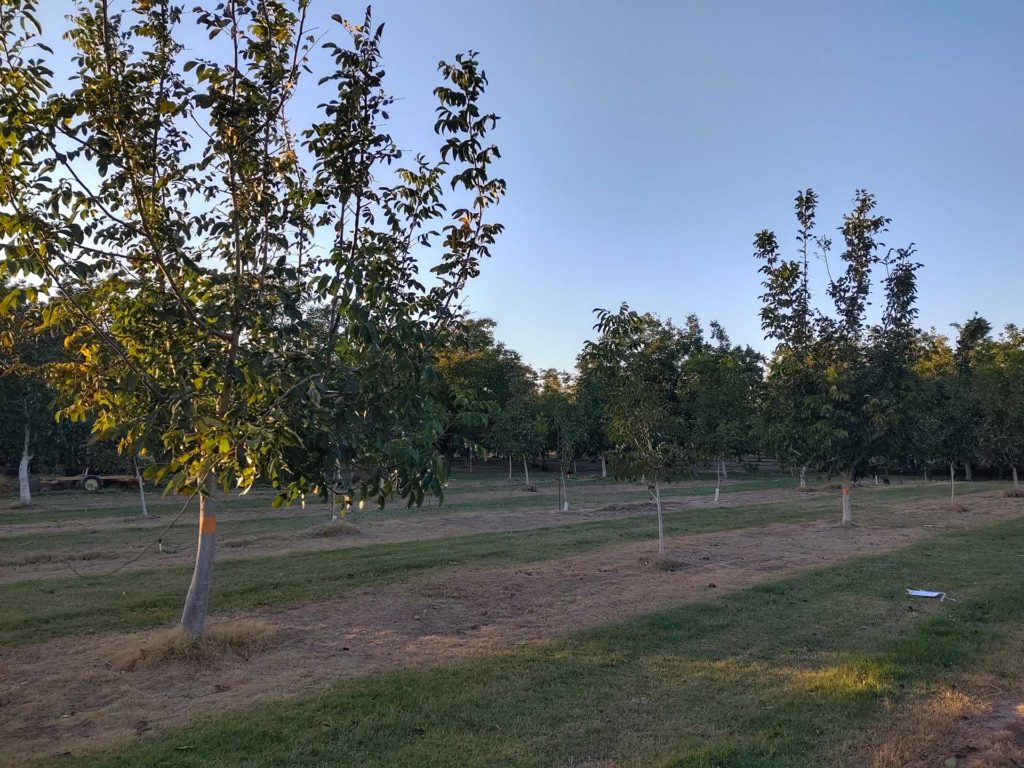
Significant progress is being made in the development of walnut rootstocks that possess resistance to the major yield limiting diseases and soil-borne pathogens.
“We are now working on putative disease resistant walnut genotypes which are being propagating to test in large scale field trials to determine how they perform compared to the greenhouse evaluations, “ said Dan Kluepfel, United States Department of Agriculture (USDA)/Agricultural Research Service (ARS) research scientist and principal investigator of the walnut rootstock development program.
“This is not just an academic pursuit. We have something in hand and in collaboration with nurseries are moving forward to place these rootstocks in field trials.”
Disease-resistant Rootstocks
Disease-resistant rootstocks for commercial walnuts are a huge deal for growers, said Cliff Beumel, a long time walnut grower and nurseryman and President of the fruit, nut and olive tree nursery Agromillora located north of Sacramento near Gridley.
“All growers eventually bump up against one of these pressures,” Beumel said of crown gall, Phytopthora and lesion nematodes. “This is a real issue right now in existing orchards.”
Most California walnut growers know they need to choose rootstocks based on their ability to resist or tolerate various soil-borne diseases and nematodes, even if pressure is low at the time of planting. After the trees are planted, there are few options for growers, who find these pathogens, to control their impact on tree health.
Significant walnut acres are planted with seedling or clonal ‘Paradox” rootstocks which are susceptible to the soil-borne diseases, crown gall, root lesion and rook knot nematode and Phytophthora root and crown rots. Kluepfel said the most promising solution for long term tree health and major yield limitations is genetic resistance/tolerance in rootstocks.

Playing Catch-up
Beumel said the walnut industry is 30 years behind the almond industry in mass rootstock propagation by cloning, a way to ensure uniformity in traits. That is due to the biological differences between the species. The technology to clone walnut rootstocks is a more recent achievement. Finding genes that are known to give certain attributes can make the process of rootstock development move faster, he said.
The use of genomic mapping will further accelerate the development of disease-resistant walnut rootstocks. The USDA ARS-University of California (UC), Davis walnut rootstock team has completed analysis of the genomic sequence data that resulted in the complete high quality reference genomes for J. regia and J. microcarpa, i.e. the English walnut and its wild North American relative respectively, that are parents to the promising disease resistant hybrid rootstocks. The genome data will accelerate the process of identifying genetic markers for disease and nematode resistance.
“We now have the best assembled and annotated genome for J. microcarpa and J. regia,” Kluelpfel said. The complete analysis of the genomic sequence data shows high quality reference genomes for those two walnut species.
Kluepfel said the research team is looking at behavior of the walnut breeding populations originating the crossing of these two key species to see if the disease resistance is present. They are in the process of fine mapping and Kluepfel said his hope is to single out and identify a handful of the genes responsible for resistance. In most cases, there is resistance to one pathogen, but in a handful of cases resistance to both crown gall and Phytophthora have been found in some of these new and novel hybrids.
“We chose to cross the widely used English walnut specifically with the wild Texas black walnut because of its native resistance to several soil-borne diseases and root nematodes, which are serious pests of walnut in California,” Kluepfel said.
The assembled genome sequences of the two walnut species also will now help researchers identify genetic markers that breeders can use to develop new varieties with improved pathogen and pest resistance.
Objectives for the Research
Objectives of this continuing walnut rootstock research are:
Traditional and clonal propagation of a genetically diverse walnut species including a fine mapping of the J. microcarpa (Texas walnut) and J. regia (English walnut) genomes and their disease resistant hybrids.
Identification of resistance/tolerance to the diseases and nematode species considered most damaging to walnut production.
Genetic, physical and functional mapping of disease resistance genes and use of molecular marker for rapid screening of resistant genotypes.
Outreach to growers, field trials and examining performance of chosen rootstocks germplasm.

Moving Forward
About 1,530 unique walnut genotypes are being maintained by the research team as micro propagated cultures. With this material 60,000 fully rooted plants were produced and many were entered in the disease resistance phenotyping pipelines.
The research team reported completion of genotyping of the germplasm collection of J. microcarpa seeds and will soon complete the associated analysis. This will be used to define the genetic diversity in an effort to select the most genetically diverse representatives for the planned field planting.
The team is also, under field conditions, continuing to monitor nematode populations on multiple Juglans genotypes identified as possessing resistance or tolerance to root lesion nematode and or root knot nematode.
In the latest report, Kluepfel said a high level of resistance to crown gall and Phytopthora have been identified. The pathogens remain the highest research priority level for the walnut industry.
A significant portion of the research team’s propagation effort has been centered on production of clonal plants from each of 600 interspecific hybrids from the genetic mapping populations. When all of the disease resistance phenotyping of all genetic mapping populations is complete for crown gall, Phytopthora and nematode it will enable fine mapping of the genetic markers for disease resistance.
Kluepfel reports that four new elite rootstock genotypes developed through this project are being studied in five replicated field trials across the state. They are being compared to industry standard clones VX2II RXI and Vlach at all sites. At one of the sites, trees were inoculated with the pathogen that causes crown gall and development was evaluated. This initial evaluation identified two of the experimental rootstocks with elevated levels of crown gall resistance compared to RXI, VX2II or VLACH, with VX2II being the most susceptible. By the end of this year, the research team anticipates having several additional disease resistant genotypes in the field where they will be challenged by both crown gall and Phytopthora along with nematodes.











